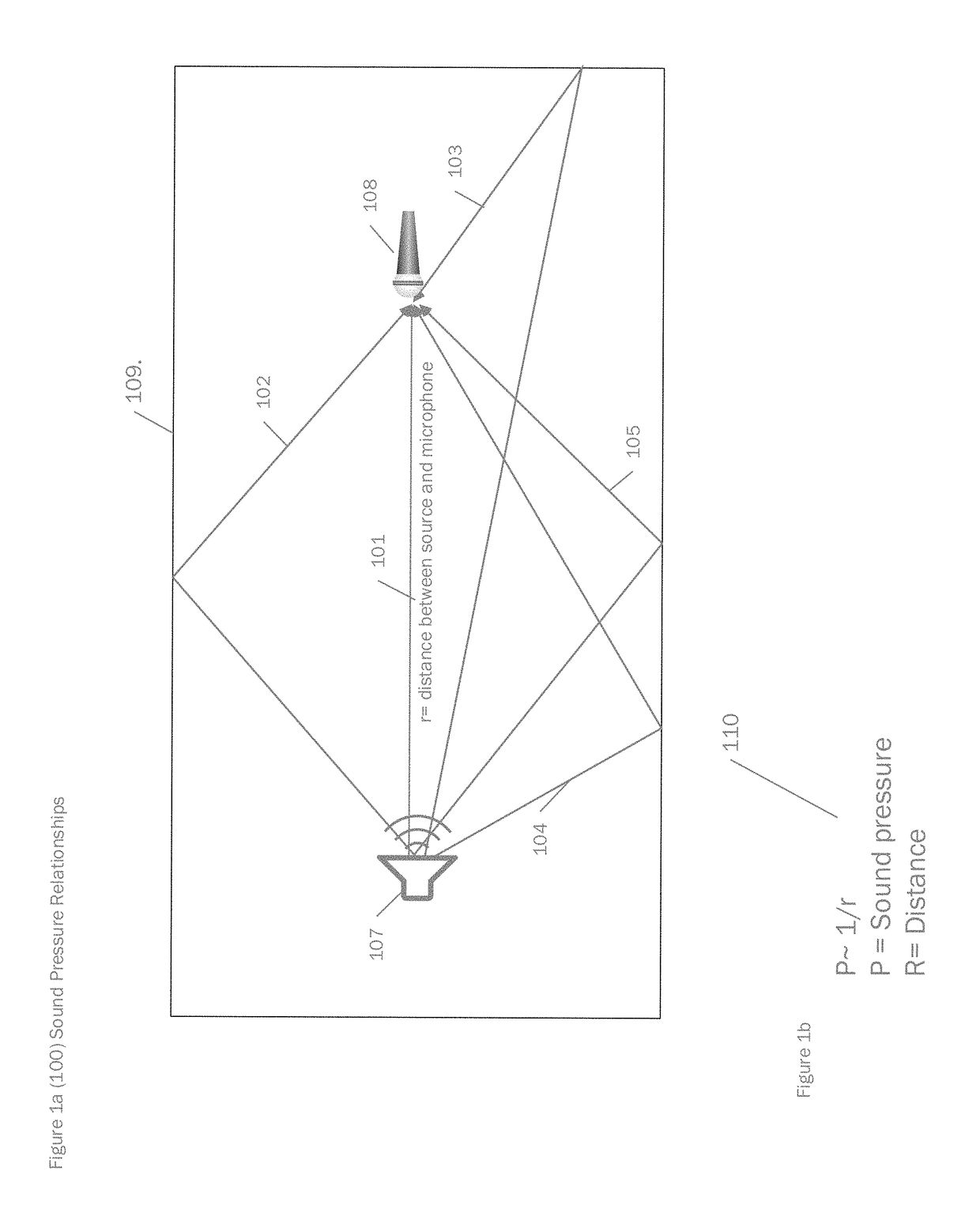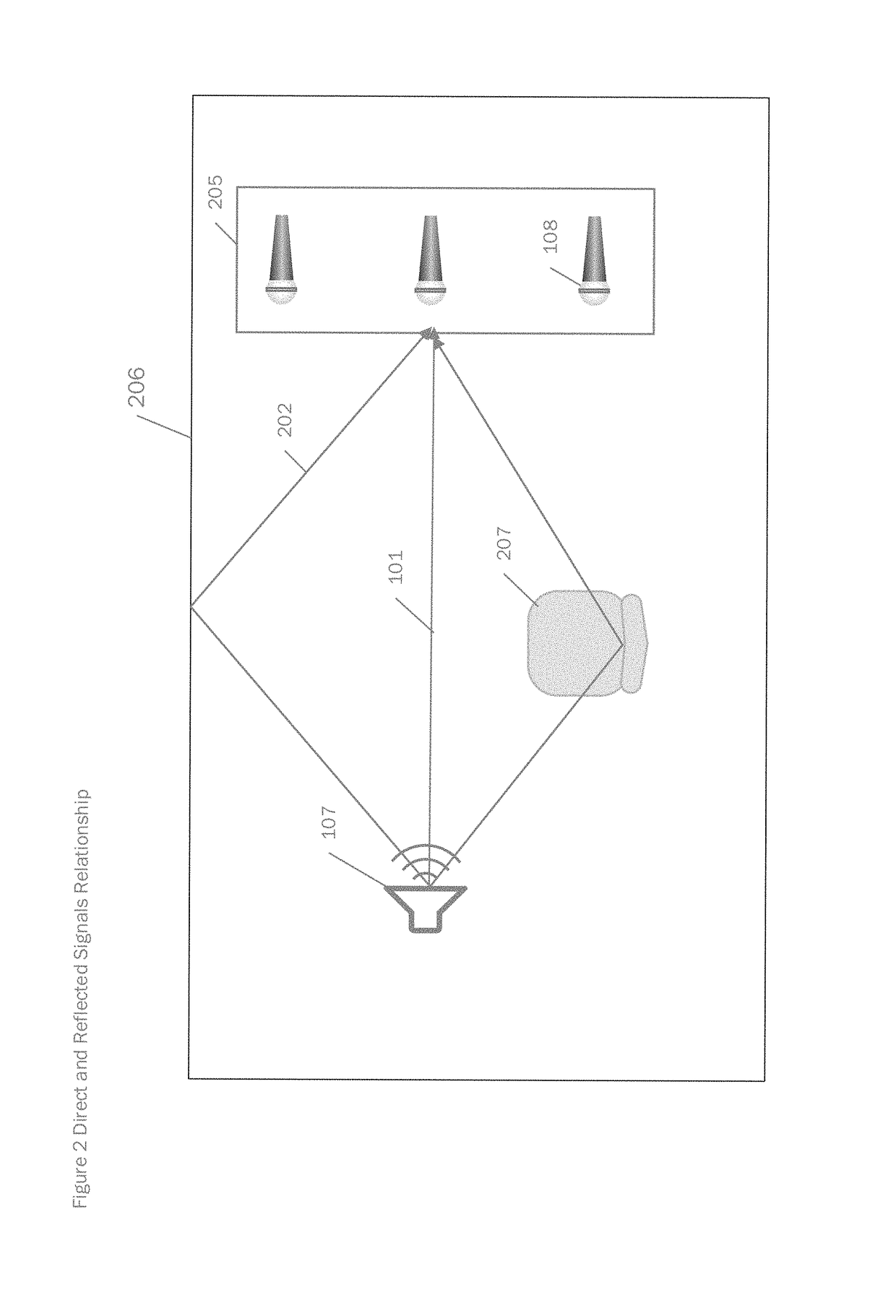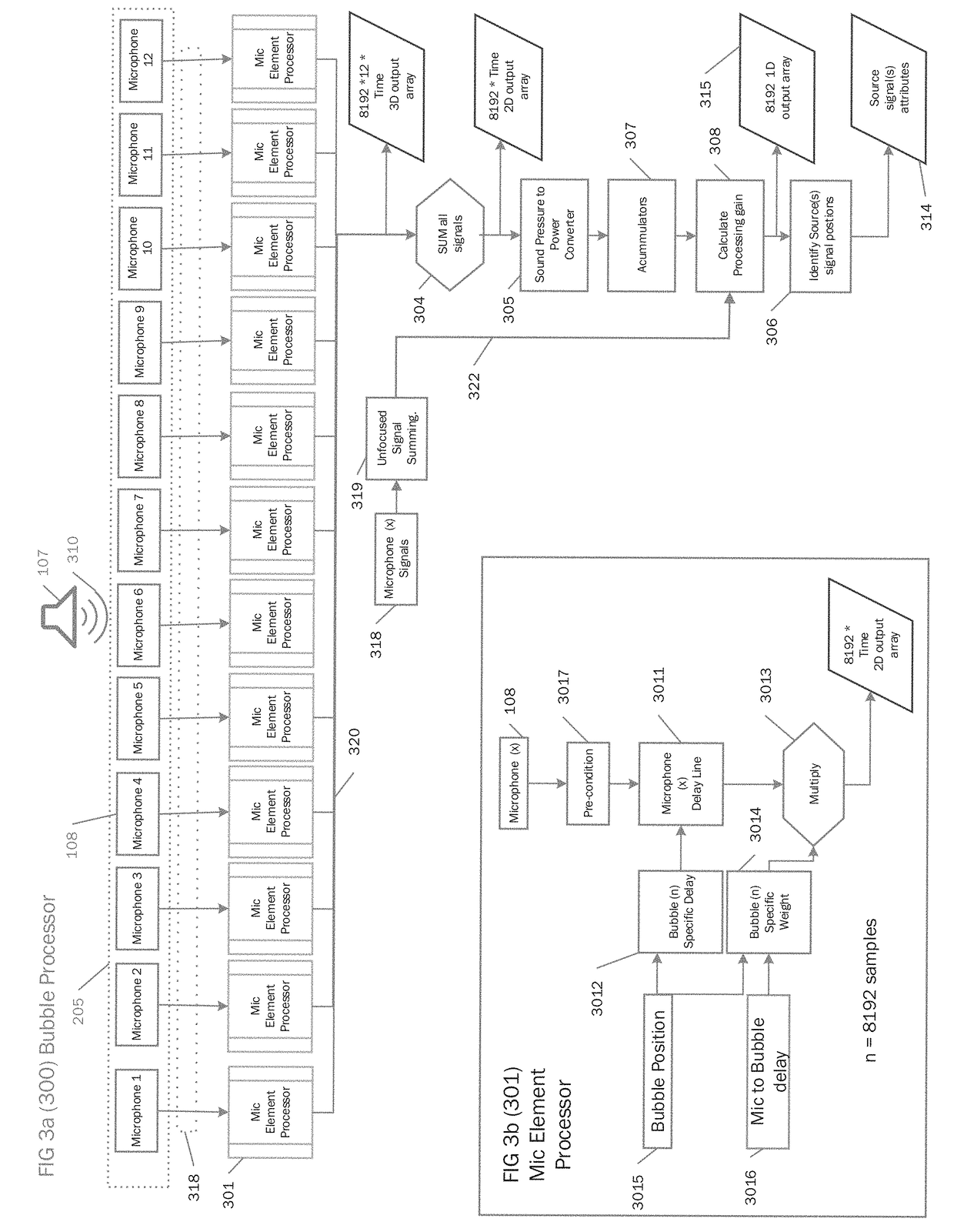Method, apparatus, and computer-readable media for focussing sound signals in a shared 3D space
a technology of 3d space and sound signal, applied in the direction of transducer circuits, frequency/directions obtaining arrangements, loudspeakers, etc., can solve the problems of increasing the complexity of hardware and installation, difficult to obtain high-quality audio at both ends of a conference call, and insufficiently solving problems
- Summary
- Abstract
- Description
- Claims
- Application Information
AI Technical Summary
Benefits of technology
Problems solved by technology
Method used
Image
Examples
Embodiment Construction
[0033]The present invention is directed to systems and methods that enable groups of people, known as participants, to join together over a network such as the Internet, or similar electronic channel, in a remotely distributed real-time fashion employing personal computers, network workstations, or other similarly connected appliances, without face-to-face contact, to engage in effective audio conference meetings that utilize large multi-user rooms (spaces) with distributed participants.
[0034]Advantageously, embodiments of the present invention pertain to utilizing the time domain to provide systems and methods to give remote participants the capability to focus an in-multi-user-room microphone array to the desired speaking participant and / or sound sources. And the present invention may be applied to any one or more shared spaces having multiple microphones for both focusing sound source pickup and simulating a local sound recipient for a remote listening participant.
[0035]Focusing ...
PUM
 Login to View More
Login to View More Abstract
Description
Claims
Application Information
 Login to View More
Login to View More - R&D
- Intellectual Property
- Life Sciences
- Materials
- Tech Scout
- Unparalleled Data Quality
- Higher Quality Content
- 60% Fewer Hallucinations
Browse by: Latest US Patents, China's latest patents, Technical Efficacy Thesaurus, Application Domain, Technology Topic, Popular Technical Reports.
© 2025 PatSnap. All rights reserved.Legal|Privacy policy|Modern Slavery Act Transparency Statement|Sitemap|About US| Contact US: help@patsnap.com



